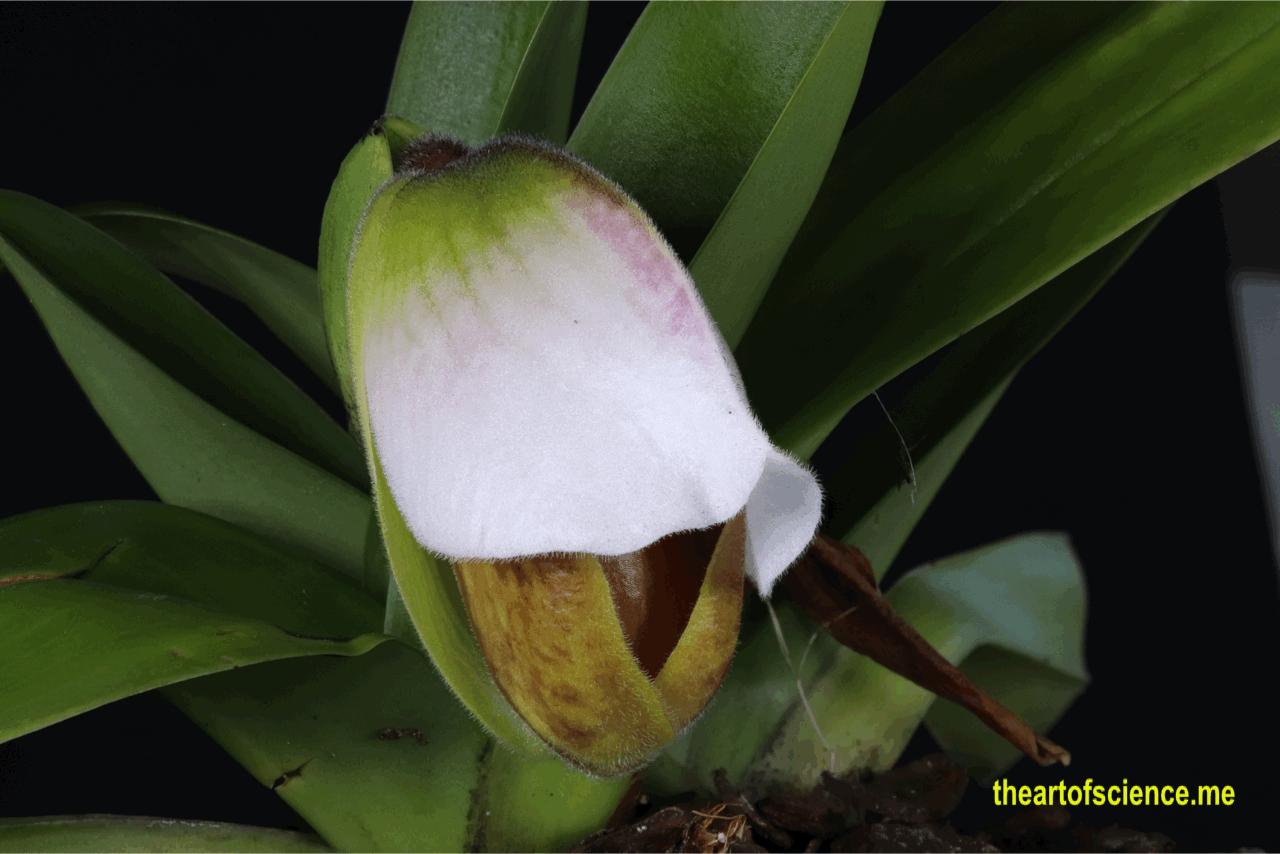The Great Slipper Orchid Scam.
Slipper orchids are a bit special but have high needs.
Pollinating the slipper orchid is a tale of deceit and occasionally death for an unsuspecting insect.
Despite this plant’s allure, it’s a complete scam for winged visitors, clever advertising but no product. Paphiopedilum Inca Harvest rely on their appearance to attract pollinators and don’t waste time producing nectar or essential oils.
An insect escape room.
The curves and folds of the lower lip form a Grecian urn-shaped trap, an insect escape room.
The shiny shield-like structure is a staminode or sterile anther, an improvised fly-swat. Luckless insects land here before losing traction on their smooth surface and tumbling into the basement. Lip surfaces appear smooth and slippery to the human eye.
The confined space of the trap renders wings useless. However, insects are well equipped with spatial recognition technology and climbing gear. After buzzing frantically for a time, compound eyes with wrap-around vision send information to the insect’s central cortex.
A potential death-trap.
A fence line of inward pointing hairs is an obvious obstacle preventing insects from walking onto the rim and buzzing off. The prison walls are smooth and nearly vertical.
A closer look.
The central cortex, is a region in the insect brain thought to have evolved 400 million years ago.
It recognises a narrow band of hairs that point upwards on the back wall. “I can use those to climb out of here,” thinks the insect, rapidly planning its next move. Elsewhere the wall is mostly smooth with a few downward pointing hairs that helped the insect into the trap in the first place.
The faint outline of a stigma is just visible beneath the staminode. Six legs grasp hairs and climb the nearly vertical wall. Reaching the top the insect squeezes into the small space between the lower surface of the stigma and the urn wall and crawls through.
Minute papillae on the stigmatic surface brush pollen grains free from the
insect. A fresh set of genes is available to the next generation of slipper orchids.
The insect sees light at the end of the tunnel. It breaks free from the crushing pressure and spills into a small space at the neck of the staminode with two exit holes ahead, left and right.
Vision footnote.
Humans blink to see better. A tear film smoothes the eye surface and clears the vision. Flys have evolved a separate approach to maximising their visual powers.
Exit stage left or right
Exhausted after a rough encounter with the orchid’s female reproductive equipment the insect escapes into a small space with two exits, right and left, clearly visible behind two bulky anthers.
.
Hanging on.
Each pollen ball sits precariously on a “hanger” A single clumsy insect could make off with the complete package as it crashes headfirst towards the exit.







